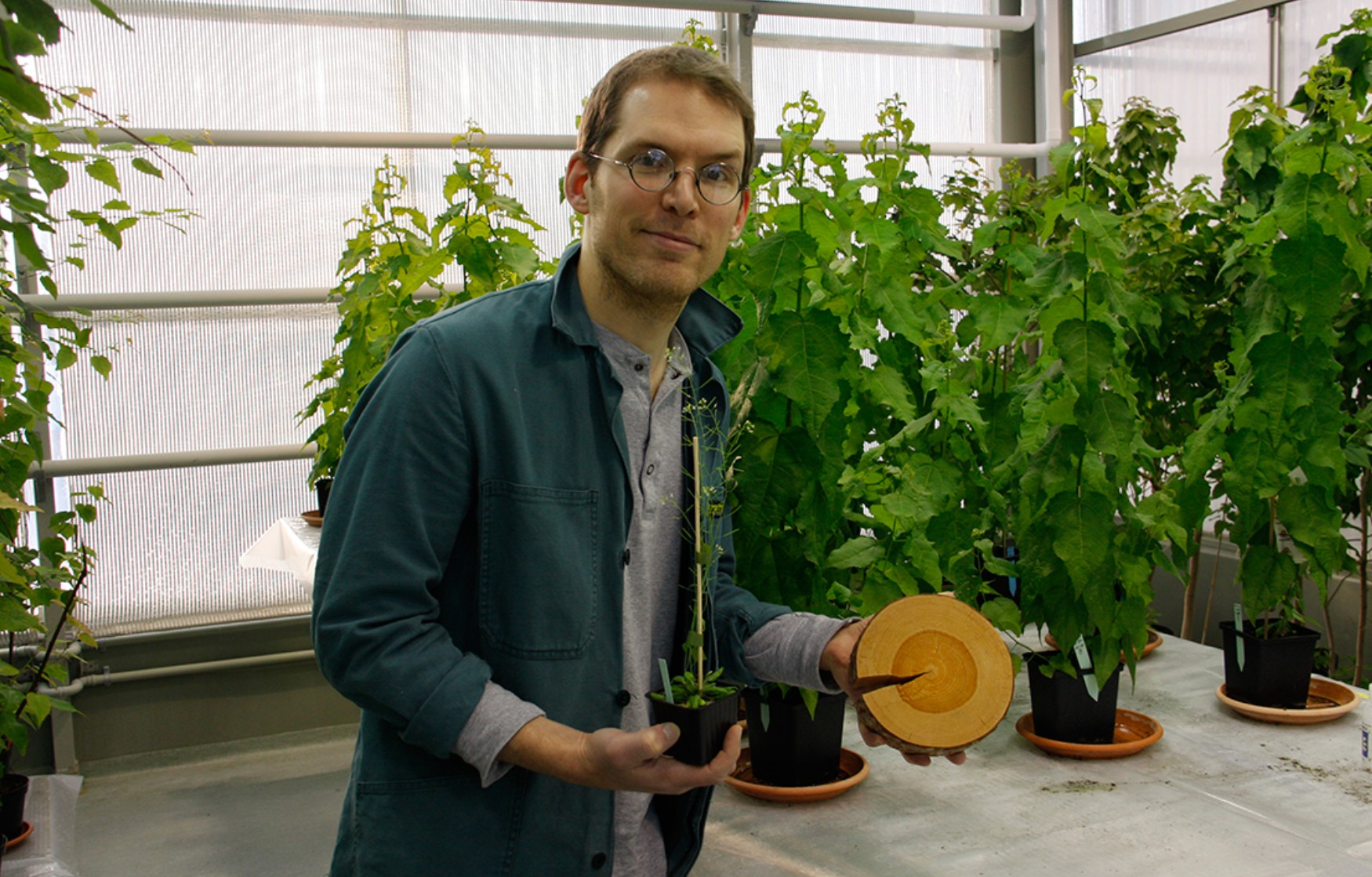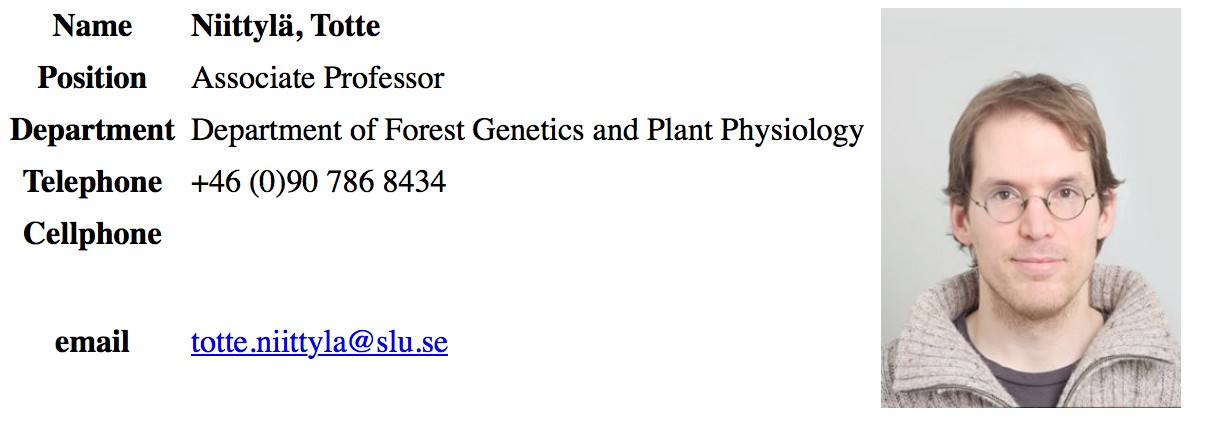博文
Plant Physiology:山杨独特的纤维素合酶复合体组成化学计量
||
Cellulose synthase stoichiometry in aspen differs from Arabidopsis and Norway spruce
First author: Xueyang Zhang; Affiliations: Umea Plant Science Centre (于默奥植物科学中心): Umea, Sweden
Corresponding author: Totte Niittyla
Cellulose is synthesised at the plasma membrane (质膜) by cellulose synthase complexes (CSCs) containing cellulose synthases (CESAs). Genetic analysis and CESA isoform quantification indicate that cellulose in the secondary cell walls of Arabidopsis (Arabidopsis thaliana) is synthesised by isoforms CESA4, CESA7 and CESA8 in equimolar amounts. Here, we used quantitative proteomics to investigate whether the CSC model based on Arabidopsis secondary cell wall CESA stoichiometry can be applied to the angiosperm tree aspen (Populus tremula; 山杨) and the gymnosperm tree Norway spruce (Picea abies). In the developing xylem of aspen the secondary cell wall CESA stoichiometry was 3:2:1 for PtCESA8a/b : PtCESA4 : PtCESA7a/b, while in Norway spruce the stoichiometry was 1:1:1 as previously observed in Arabidopsis. Furthermore, in aspen tension wood (应拉木) the secondary cell wall CESA stoichiometry changed to 8:3:1 for PtCESA8a/b : PtCESA4 : PtCESA7a/b. PtCESA8b represented 73% of the total secondary cell wall CESA pool, and quantitative PCR analysis of CESA transcripts in cryo-sectioned (冷冻切开的) tension wood revealed increased PtCESA8bexpression during formation of the cellulose-enriched gelatinous layer (胶质层) while the transcripts of PtCESA4, PtCESA7a/band PtCESA8adecreased. A wide-angle X-ray scattering analysis (广角X射线散射分析) showed that the shift in CESA stoichiometry in tension wood coincided with an increase in crystalline cellulose microfibril (晶状纤维素微纤丝) diameter suggesting that the CSC CESA composition influences microfibril properties. The aspen CESA stoichiometry results raise the possibility of alternative CSC models, and suggest that homomeric (同型异构体) PtCESA8b complexes are responsible for cellulose biosynthesis in the gelatinous layer in tension wood.
纤维素是在质膜上由纤维素合酶构成的纤维素合酶复合体所合成的。遗传分析和CESA同源异构体定量分析显示拟南芥的次生细胞壁中的纤维素是由CESA4、CESA7和CESA8以相等比例组成的复合物所合成的。本文利用蛋白定量研究了拟南芥次生细胞壁中的CESA化学计量是否适用于山杨和挪威云杉。在山杨发育中的木质部中,次生细胞壁CESA化学组成为3 : 2 : 1的PtCESA8a/b : PtCESA4 : PtCESA7a/b,而挪威云杉中则是与拟南芥中报道的相同,即1 : 1 : 1。此外,在山杨的应拉木中,次生细胞壁CESA化学组成变为8 : 3 : 1的PtCESA8a/b : PtCESA4 : PtCESA7a/b。PtCESA8b占了总次生细胞壁CESA的73%,对冷冻切开的应拉木进行定量PCR分析显示在形成富含纤维素的胶质层时,PtCESA8b的表达量增加,而PtCESA4、PtCESA7a/b以及PtCESA8a的表达量降低。广角X射线散射分析显示应拉木中的CESA化学组成的改变与晶状纤维素微纤丝直径的增加相一致,表明纤维素合酶复合体CESA的组成影响微纤丝的特性。山杨CESA化学组成增加了纤维素合酶复合体的组成模型,表明PtCESA8b复合物作用于应拉木胶质层中的纤维素生物合成。
通讯:Alan Lloyd (https://cns.utexas.edu/directory/item/16-molecular-biosciences/193-lloyd-alan-m?Itemid=349)
个人简介:2000年,赫尔辛基大学,硕士;2004年,英国John Innes中心、东安格利亚大学,博士;2005-2008年,美国卡内基科学研究所,博士后;2009-2014年,瑞典农业科学大学,助理教授;2015-至今,瑞典农业科学大学,副教授。
研究方向:林木中作用于茎干生物量及木材密度的遗传因子。
doi: https://doi.org/10.1104/pp.18.00394
Journal: Plant Physiology
First Published date: 14 May, 2018
(P.S. 原文下载:链接:https://pan.baidu.com/s/1qFiSsqwlF_7JjmGMbedfhQ 密码:dmu6)
https://blog.sciencenet.cn/blog-3158122-1114220.html
上一篇:New Phytologist:甜菜甜菜红色素生物合成关键酶DODA功能分化
下一篇:Plant Biotechnol J:中国梨石细胞木质化的分子调控机制
全部作者的其他最新博文
- • Plant Physiology:CsMADS3促进柑果中的叶绿素降解和类胡萝卜素合成(华中农业大学)
- • Molecular Plant:LBD11-ROS反馈调节作用于拟南芥的维管形成层增殖和次生生长(浦项科技大学)
- • Science Advances:根结线虫通过调控植物的CLE3-CLV1模块,促进侵染进程(日本熊本大学)
- • Nature Communications:油菜素内酯参与植物营养生长期转变的分子机制解析(浙江农林大学)
- • Current Biology:光合作用产生的蔗糖驱动侧根“生物钟”(德国弗莱堡大学)
- • PNAS:花同源异型基因在叶中被抑制、花中被激活的分子机制(南卡罗来纳大学)


